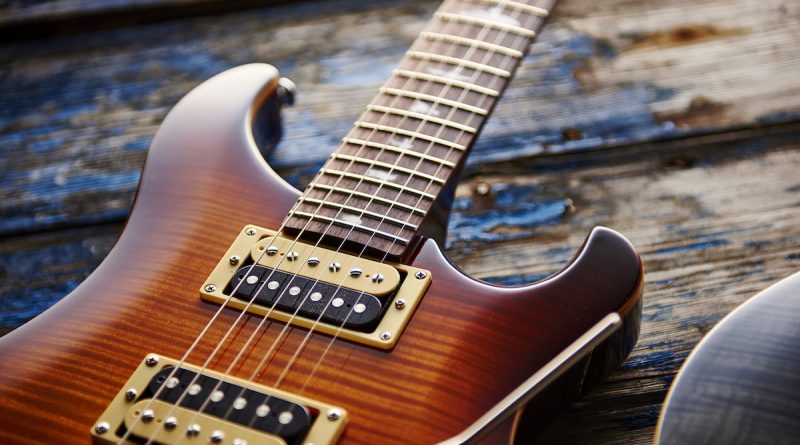Best electric guitar strings ( Tested and approved)
Sometimes you may end up buying electric guitar strings which aren’t durable. This is caused by a lack of enough information before making your order. This mostly affects those who buy goods online without doing good research. This article will guide you on how to choose the best electric guitar strings ( Tested and approved).
For an electric guitar to be heard at a typical performance volume, unlike a standard acoustic guitar, it has to be amplified externally. One or more pickups need to be used to convert the vibration of the strings to electrical signals which are then played by loudspeakers as sound.
Most electric guitars are designed and constructed differently in terms of the configuration of the neck, body and pickups. There are different types of electric guitars as well such as solid-body guitar, six-string guitar and hollow body guitar.
The electric guitar is mostly used in pop music for different purposes like a rhythm guitar which provides the chord sequences and setting the beat, and also the lead guitar which produces instrumental melody lines and solos.
Different electric guitar strings are made in different gauges which are measured in thousandths of an inch. There are lighter gauge and heavier gauge electric guitar strings, and they both play a big role in the playability and sound of the music.
Lighter gauge electric strings
- They produce less volume and sustain when played
- Lighter gauge are generally the easiest to play
- They are not long-lasting as they break easily
- Lighter gauge are a safe choice for vintage guitars as they exert less tension on the guitar neck
- It is easier to bend notes and fret using these lighter gauge electric strings
Heavier gauge electric strings
- More tension is exerted around the guitar neck
- The heavier gauge electric strings usually produce more volume and sustain
- They are harder to play compared to the lighter gauge electric strings
- More finger pressure is required for fretting and bending notes
When shopping for electric guitar strings, you should consider several factors which may include but are not limited to; the sound character and tone needed to be achieved, your music genre and playing style as well as how often you usually play the guitar.
All these factors should be put into place by checking other considerations on what type of guitar string one is interested in. They include:
- The type of string winding method used
- The string gauge
- The materials used to construct the strings
- The coated and uncoated string treatments available
Examples of electric guitar string winding
Round wound: this is the most common type of winding as it produces more sustain and attack. It also has a more noticeable ridged texture.
Flat wound: has a very smooth touch with a flat, dark tone which is less responsive to picking dynamics. These kinds of strings are popular with people who play jazz and blues music.
Half wound: they have a smooth texture with a darker tone and have fewer attacks compared to the round wound electric strings.
Materials used in making electric guitar strings
The guitar strings usually bring out the best in any player. Most electric guitars usually have six metal strings that are different in the thickness or gauge used.
Some guitar strings have unique features that make them more desirable such as; been sweat resistance, brighter sound or drop tunings. Therefore, thorough research is needed before making a purchase of these electric guitars.
Guitar strings are made from nickel, steel or coated materials. The steel strings are usually more bright and punchy and are mostly used for modern musical styles. They may need EQ fiddling so they may not produce excess brittle sounds.
Coated strings mostly are usually covered in indistinguishable thin layers of polymer. This is to help increase the durability of the strings and thus is able to retain clarity more than a regular set of strings.
Nickel material is the most commonly used in making guitar strings due to its rich body and warmth. It is mostly suited for the blues style and rhythm playing in how the frequencies all blend into a mix.
Types of guitar strings gauge
Gauge is how thick or thin a guitar string is. The strings usually get thinner as you ascend and the thickest is used for the lowest notes. Thinner strings, on the other hand, are used for higher frequencies. Thicker strings are naturally made to produce bass frequencies, due to their thickness.
Thin strings are considered best for guitar beginners as they do not really require much finger strength for fretting. They are also easy to bend as they do not hold much tension like the thick strings.
Medium strings: these strings are best for jazz, blues, rock and metal music genres as they provide enough thickness to produce a chunky rhythm sound.
Thick strings: most blues and metal players usually play the heavier gauges as they can be tuned to lower tunes without necessarily becoming floppy. Thick strings are more difficult to pick since the picking hand is made to cover more ground.
Hybrid strings: they are formed by putting together different standard packs. Lower strings usually maintain the strength for riffling and the lighter strings are more flexible for soloing.
That was the list of the best electric guitar strings which are considered to be very durable. I hope by now you cannot make the mistake of buying the wrong choice of electric guitar wires. There are many companies that sell the listed type of electric guitar wire, for example, Guitar world
Also, read more on best indoors electric heater

